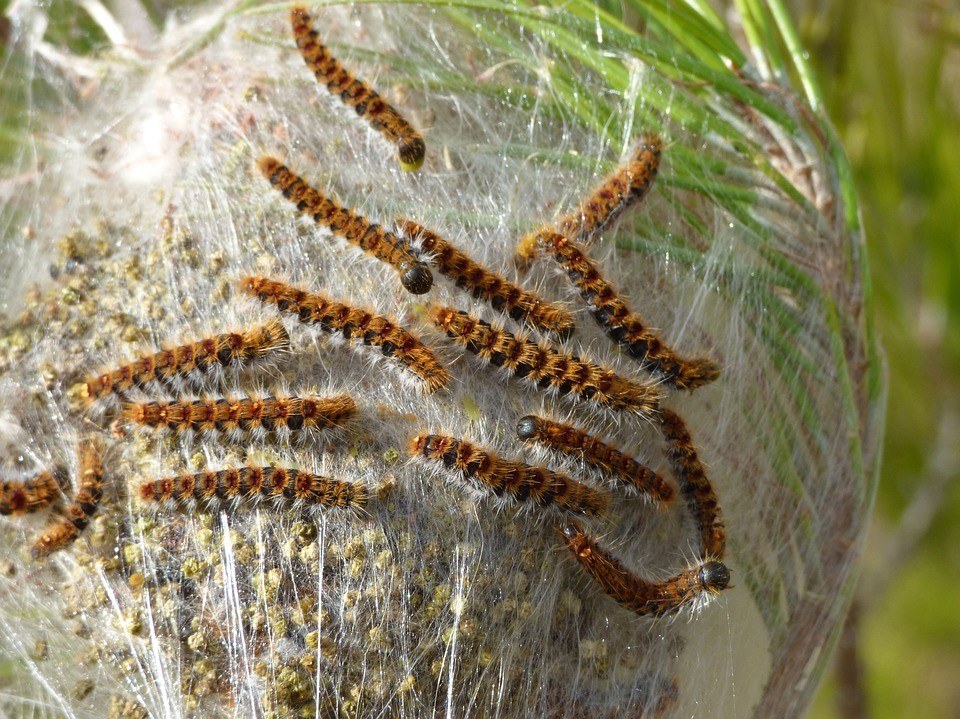
In Spring the risk of suffering allergies increases, as the plant and animal allergens that cause them appear. The Pine Processionary (Thaumetopoea pityocampa) is a type of moth that invades particular tree species, especially pines. This year its arrival has come early thanks to a mild and dry winter.
The caterpillars of the Pine Processionary can be seen moving together in long head-to-tail rows. Curiosity often draws young children to these rows of caterpillars, but these creatures pose a risk to their eyes, as well as to those of adults and pets. The caterpillar is covered in fine hairs which we can come into contact with when they become loose and float through the air. These hairs can cause skin, nose and eye irritations.
The hairs can become embedded in the cornea, the transparent exterior layer of the eye, or in the conjunctiva (the membrane that covers the eye and lines the eyelids). This can cause a number of reactions ranging from mild inflammation to anaphylactic shock (a very serious allergic reaction).
If we come into direct contact with the caterpillar, its hairs can become embedded in the skin releasing a toxin that can cause histamine (the body’s natural defence against allergens) to be produced in some people.
In around 10% of cases, these skin reactions are accompanied by eye symptoms, although some take longer to manifest than others. These symptoms are often difficult to diagnose correctly.
Early eye symptoms can include:
Eye conditions and symptoms that develop later are the consequence of the hairs penetrating deeper into the eyeball. When these hairs migrate to internal eye structures, they can form nodules in the iris (the coloured part of the eye), damage the sclera (white of the eye), or lead to glaucoma, uveitis, cataract and panophthalmitis (an infection covering all parts of the eye).
Treatment will depend on the patient’s symptoms and how seriously they have been affected. Treatment ranges from use of antihistamines and steroid hormones to treat the reaction, to cleaning the infected and swollen eyelids. Where the exposure has led to more serious eye conditions, these will have to be treated separately.
It is advisable to avoid contact with the Pine Processionary wherever possible (including its nests and the trees that host it) to avoid the caterpillar hairs from entering your eyes.

Contact us or request an appointment with our medical team.